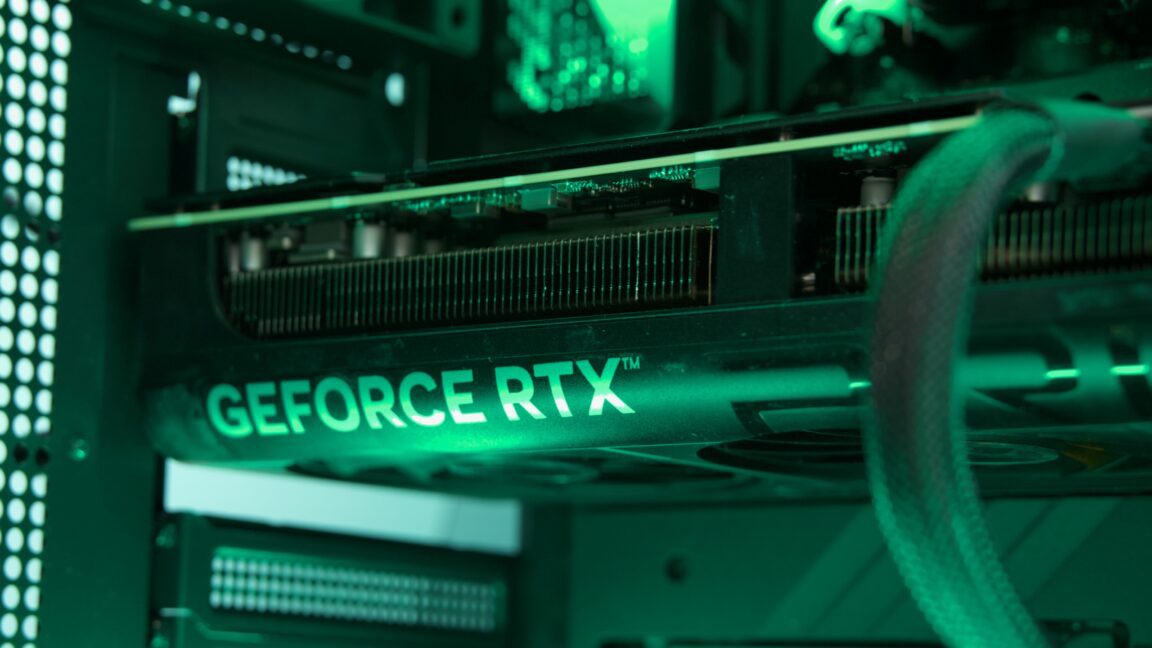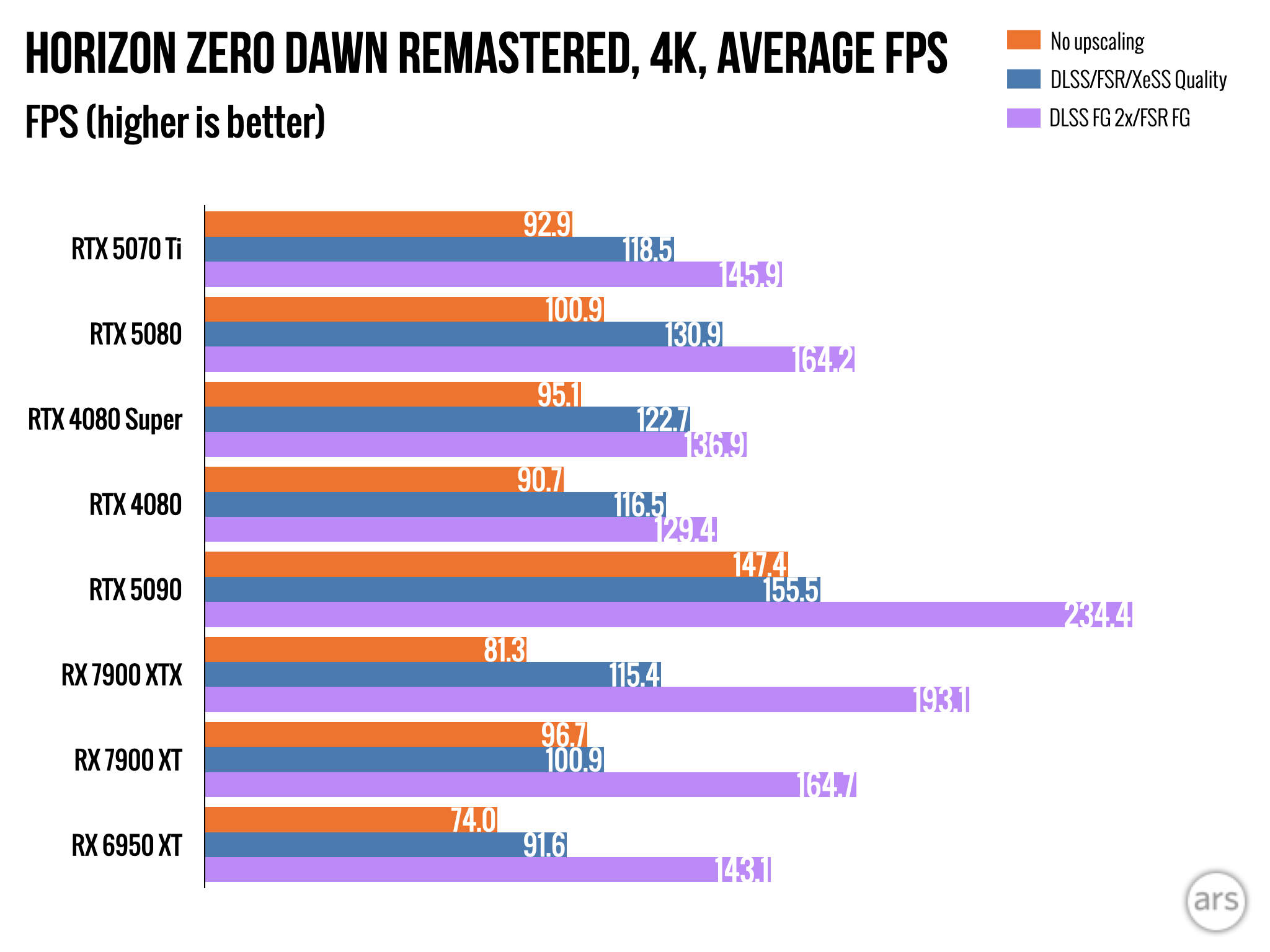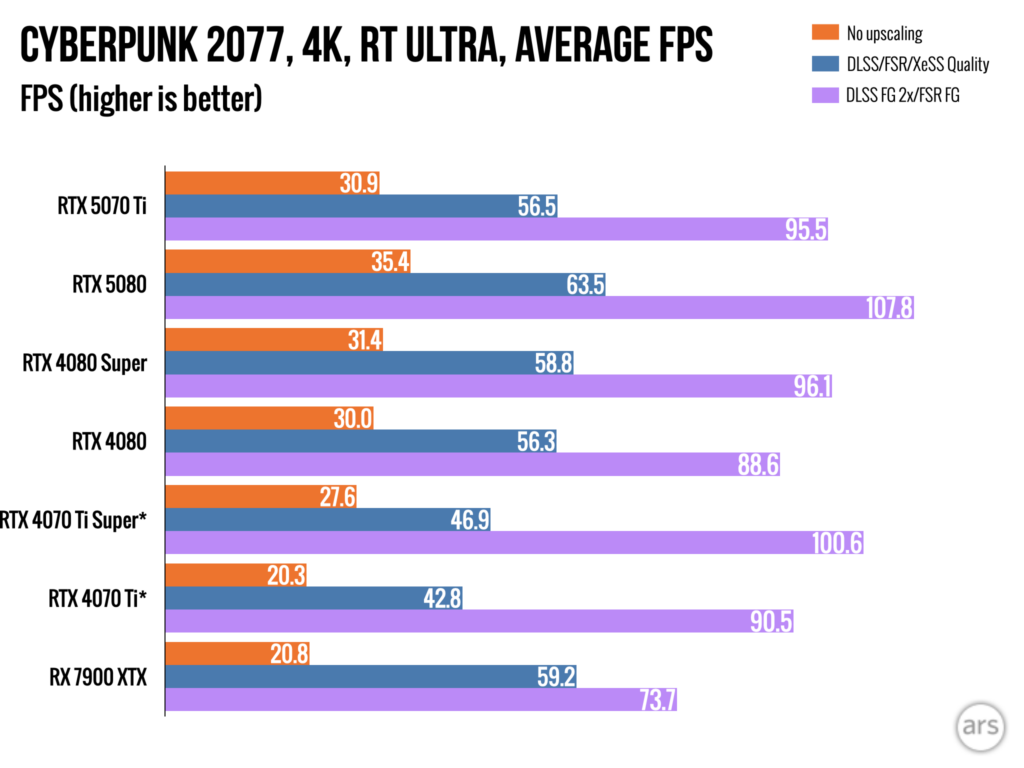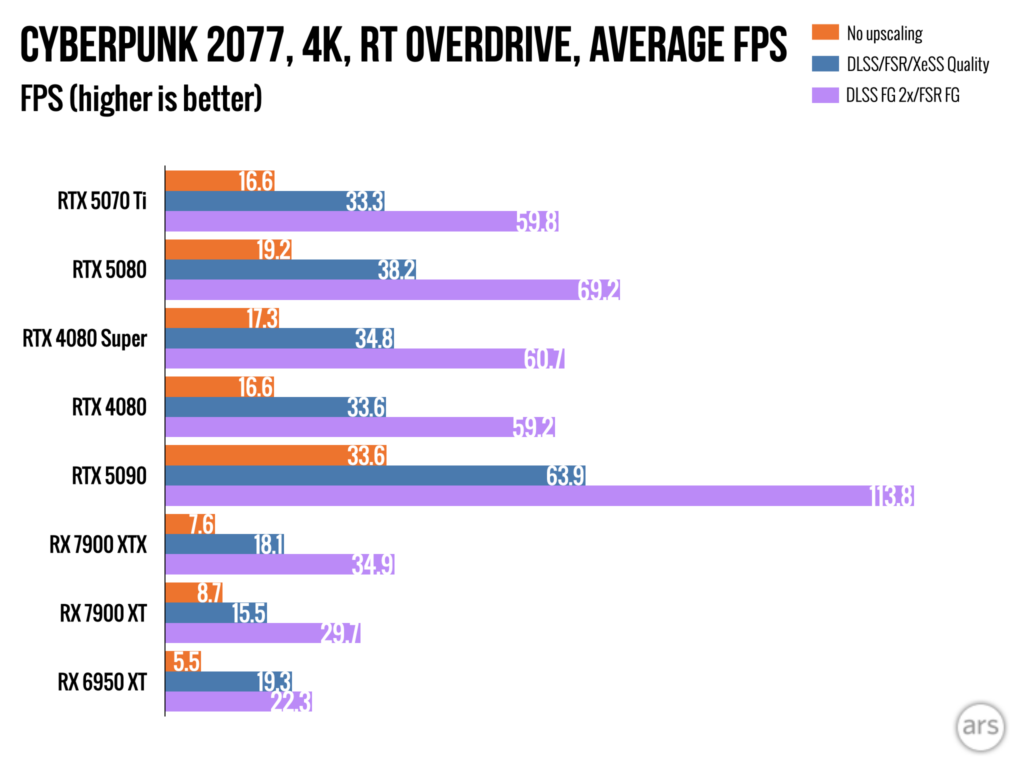
Despite our extensive testing of various graphics cards with the latest drivers in our upgraded test environment, we currently lack access to the 4070 Ti Super, 4070 Ti, or 3070 Ti for evaluation. We’ve included some performance metrics for these GPUs based on earlier reviews furnished from a PC that operated with outdated drivers and featured a Ryzen 7 7800X3D processor in place of a 9800X3D. To indicate this, we have marked these entries with asterisks in our charts. Although these figures offer a decent approximation of the older GPUs’ performance relative to one another, it’s advisable to take them with a slight degree of caution.
Performance and Power Consumption
Even though it contains fewer CUDA cores than both variants of the 4080, the 5070 Ti manages to remain competitive with the 4080 and 4080 Super through a blend of architectural advancements and increased memory bandwidth. In our testing, it consistently positioned itself between the two 4080 models, with power consumption levels under load also mirroring those of its higher-tier counterparts.
Graphics benchmarks featuring DLSS/FSR and/or frame generation enabled.
In essence, the 5070 Ti operates very similarly to an RTX 4080, additionally offering support for DLSS Multi-Frame Generation. This exciting capability makes us somewhat enthusiastic about its price of $749, but our excitement wanes as that figure nears $1,000.
Since it closely rivals the 4080, the performance difference between the 5070 Ti and the 5080 tends to be minimal. Across most of the games we assessed, the 5070 Ti achieves approximately 90% of the 5080’s performance.
Although the 5070 Ti’s speed falls about 60% short of the RTX 5090’s capabilities, its value proposition is notably superior. This likely stems from the 5070 Ti facing competition from other GPUs. In particular, for non-ray-traced gaming, the Radeon RX 7900 XTX typically matches the 5070 Ti’s performance, although it is largely unavailable at this point unless you’re prepared to pay a premium for it.












